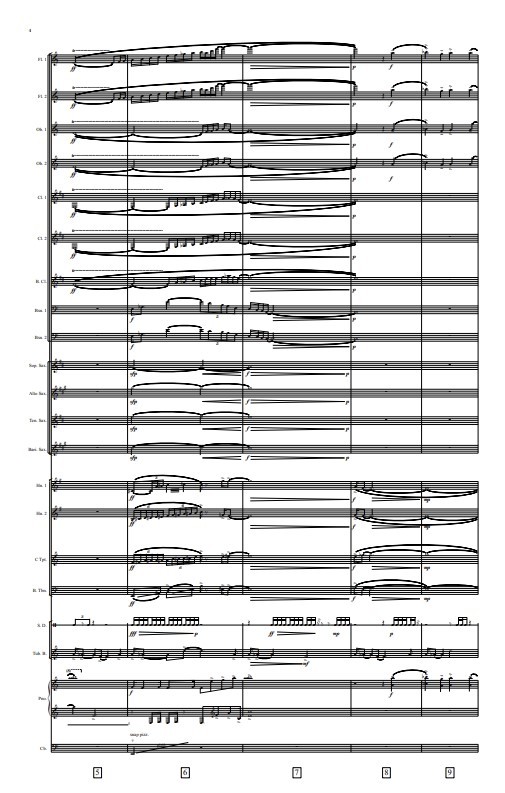la flor más linda
Item
-
Score title
-
la flor más linda
-
Composer
-
Gilda Lyons
-
Program note
-
In the fall of 2018, the political climate in Nicaragua could be described as unstable at best. Peaceful protesters were preparing to make a statement and march through Diriamba while government forces were already waiting for them with blockades and weapons in hand. In response to this development, the contemporary composer, performer, and visual artist Gilda Lyons had recorded a verse from Nicaragua, Nicaragüita and posted it on her Facebook page. It was a simple “cry into the abyss,” but the message resonated with many of her friends and family. Gilda’s statement and sentiments eventually bloomed into la flor más linda.
The work begins with the excitement of church bells and fireworks, appropriately portrayed by the chimes and snare drum. This soundscape is immediately swept up by the strong winds of Diriamba, represented by the ascending woodwind flourishes. As if in the distance, a lone trumpet plays the opening line of Carlos Mejía Godoy’s Nicaragua, Nicaragüita, issuing both nostalgia and Nicaraguan national pride. Speaking to the abundance of imagery, Lyons writes:
With arms outstretched through sound, sonic images I associate with Nicaragua are slammed together: the Basílica bells that toll freely during the Festival of San Sebastián; the pito and chischiles of the dance of the Toro Huaco, for which stand in flute and maracas; the firecrackers that announce celebration; scalar gestures that conjure the strong wind that blows through Diriamba, my mother’s hometown; fragments from de la Cruz Mena’s Los Amores de Abraham, a tune my grandfather and his brothers played in their ensemble Marimba Diriangén; and a single gesture from Godoy’s Nicaragua, Nicaragüita.
As a first-generation American, Lyons grew up in New York but frequently travelled to Nicaragua throughout her life to visit her family. It is clear that the street fairs she attended with her mother during the Festival of San Sebastián are still vivid in her memory. In conversations about the work, she has remarked that the firecracker and firework “interruptions” in Diriamba are always sporadic, fun, and exciting, significantly more so than the Fourth of July celebrations in America. As the work evolves, these interjections (represented by the snare drum) become increasingly more persistent and menacing, completely overwhelming the sound palette and transforming the aural imagery. It is at this moment that we understand - the snare drum exclamations are not fireworks, and the moment is no longer a memory. The moment is now, and the fireworks have been overpowered by the machine guns of the dictatorial Ortega government.
The song of the people and the unofficial symbol of resistance and independence, Nicaragua, Nicaragüita, also goes through a similar metamorphosis. By the time the brass chorale plays the penultimate statement, the harsh polychordal qualities render the original melody nearly unrecognizable. There is time for pause and reflection as the final statement is sung by members of the ensemble, and the same words that were once chanted together in celebration are now quiet, disconnected, and mournful. Nicaragua, Nicaragüita is no longer a call to arms; it is a lament for that which has been lost. Estamos con la gente de Nicaragua, siempre. Viva Nicaragua libre.

